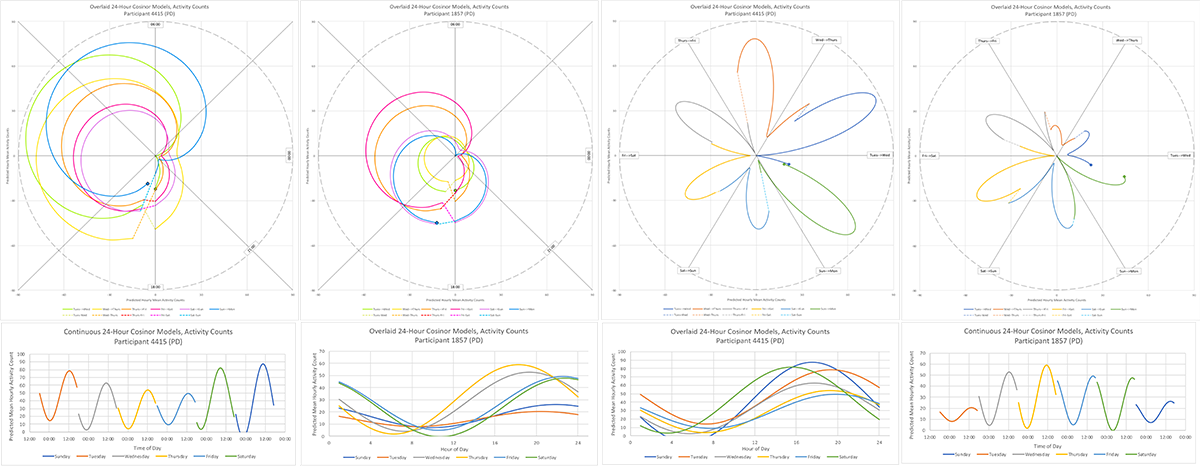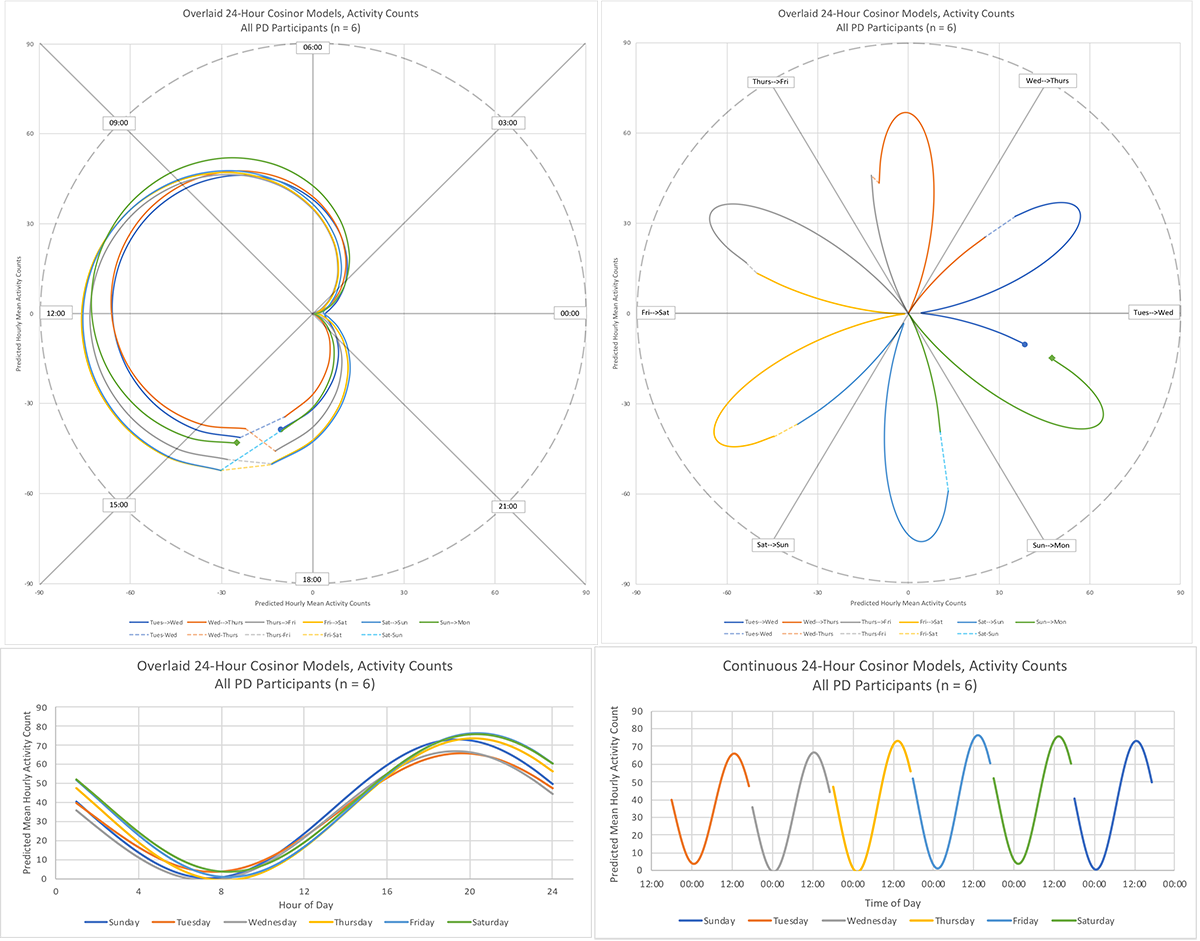Session Information
Date: Wednesday, September 25, 2019
Session Title: Non-Motor Symptoms
Session Time: 1:15pm-2:45pm
Location: Agora 3 West, Level 3
Objective: To characterize infradian variations across the week in participants with Parkinson’s disease (PD), preliminary analyses were conducted as a means to develop a process and method for further characterization of rest-activity rhythms.
Background: The continuous, longitudinal nature of accelerometry monitoring (i.e. actigraphy) is well-suited to capturing the regular 24-hour oscillation in human activity across the day, the cumulative effect of our circadian rhythm and behavior. Sleep and circadian disruption can be indirectly measured through changes in rest-activity rhythms and are both major features of PD. However, rest-activity rhythms and whether between-day differences are part of a regular infradian (i.e. < 24 hr) rhythms has not been well characterized in PD.
Method: 6 PD participants (H&Y Stage 1 – 3) wore a Philips Actiwatch Spectrum PRO continuously for one week. Accelerometry was recorded at 32Hz, transformed into “activity counts”, and binned into 15-second epochs. Rest-activity rhythms were quantified by fitting an oscillating cosinor model with a 24 hour period to each participant-day of activity data. Two-way ANOVAs were used to examine between-subject differences and repeated-measures ANOVAs were used to examine between-day differences across the week for the three cosinor parameters – Midline Estimating Statistic of Rhythm (MESOR), Amplitude, and Acrophase – which represent the mean, mean range, and relative phase-shift of activity during a day, respectively.
Results: The cohort was 66.6% male; mean age 61 (range: 54 – 66). We observed an infradian oscillation in activity with its peak on Friday/Saturday and its nadir on Tuesday/Wednesday [figure 1]. The parameters did not significantly vary across the week (MESOR: p = 0.59, Amplitude: p = 0.80, Acrophase: p = 0.89). The largest between-day contrasts were generally antipodal: Sunday/Wednesday for MESOR (p = 0.10), Saturday/Tuesday for Amplitude (p = 0.30), and Saturday/Wednesday for Acrophase (p = 0.30). There was pronounced inter-individual variability in MESOR (p < 0.01) and Amplitude (p < 0.01), but not Acrophase (p = 0.07) [figure 2].
Conclusion: Actigraphically measured rest-activity rhythms in PD vary by day, by individual, and demonstrate infradian effects. These will need to be replicated in larger cohorts to better characterize the degree to which inter-individual and inter-daily variability interact to produce the observed infradian rhythms.
To cite this abstract in AMA style:
C. Brooks, R. Koehler, MK. Erb, F. Mortazavi, J. Bhangu, K. Thomas. Actigraphically Characterized Infradian Rest-Activity Rhythms in Parkinson’s Disease [abstract]. Mov Disord. 2019; 34 (suppl 2). https://www.mdsabstracts.org/abstract/actigraphically-characterized-infradian-rest-activity-rhythms-in-parkinsons-disease/. Accessed January 6, 2026.« Back to 2019 International Congress
MDS Abstracts - https://www.mdsabstracts.org/abstract/actigraphically-characterized-infradian-rest-activity-rhythms-in-parkinsons-disease/


